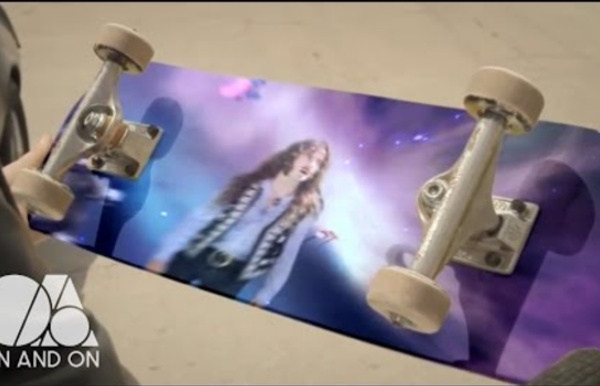



Parov Stelar - Catgroove Bitter Sweet Symphony 1997 single by the Verve The music video features Ashcroft walking down a busy pavement in Hoxton, London, bumping into passersby. It was played frequently on music channels and was nominated for several awards. The music video was nominated for Video of the Year, Best Group Video, and Best Alternative Video at the 1998 MTV Video Music Awards.[4][5] "Bitter Sweet Symphony" reached number two on the UK Singles Chart, and stayed on the chart for three months.[6] It was released in the US in March 1998 by Virgin Records America, reaching number 12 on the Billboard Hot 100.[7] It was named Rolling Stone and NME Single of the Year and was nominated for Best British Single at the 1998 Brit Awards. In 1999, it was nominated for the Grammy Award for Best Rock Song.[8] "Bitter Sweet Symphony" is considered one of the defining songs of the Britpop era and has been named one of the greatest songs of the decade by several publications. Writing and recording[edit] Credits dispute[edit] Legacy[edit]
The Tape-beatles American multi-media group The Tape-beatles (also known as Public Works) are a multi-media group that formed in Iowa City in December 1986.[1] Its members have included Lloyd Dunn, John Heck, Ralph Johnson, Paul Neff, and Linda Morgan Brown. Beginning with analog tape recorders, and later expanding to include digital technology and film media, the group has used collage techniques to create works that challenge the notion of intellectual property.[2] Their works make extensive use of materials appropriated from various sources through a process they call "Plagiarism®". The Tape-beatles' body of work consists mainly of noise music and audio art recordings, expanded and performed cinema performances, videos, printed publications, as well as works in other media. They produce and release work under an umbrella organization called Public Works Productions.[3] History[edit] Lineup and early years[edit] Members of The Tape-beatles currently include Lloyd Dunn and John Heck. 1991–2000[edit]
tape beatles by Paul Ashby Who is (are?) the Tape-beatles? When will the Apple Corps’ voracious hordes of litigators go after the shadowy Iowa City collective for its use of the fab four’s sacred name? How do the Tape-beatles summon the patience to listen to, sample and edit together such overwhelming amounts of culture? Their CD, Music with Sound (DOVentertainment/Canada), isn’t going to explain away any of the above. The Tape-beatles’ “publishing” company is called Plagiarism® Productions. If you like your social commentary high-tech and postmodern — Negativland’s wry slice-and-dice/mix-and-match collages come to mind — the Tape Beatles may be what you’re looking for to annoy your pets and drive your roommates batty.
THE MEDIUM IS THE MASSAGE The Medium is the Massage ! L'essentiel de la doctrine du Canadien Marshall McLuhan (1911-1980) réside dans cet axiome. Théoricien des communications, célèbre pour son étude des effets des médias sur la pensée et le comportement, il nous démontre dans son livre "The Medium is the Massage: An Inventory of Effects", co-écrit avec Quentin Fiore et publié en 1967, que l'outil de transmission ou de distribution par lequel nous recevons un message, c'est-à-dire le média (radio télévision, téléphone, livre...), exerce autant, sinon plus d'influence sur nous que le contenu même du message. La façon dont nous percevons l'information est donc lentement transformée par le média qui nous l'apporte, ce dernier crée un milieu qui agit sur nos perceptions sensorielles.
“The Studio as Compositional Tool” (1983) by Brian Eno Brian Eno’s famous essay, first given as a lecture in 1979, and then printed in Down Beat magazine in July and August of 1983… Brian Eno delivered the following lecture during New Music New York, the first New Music America Festival sponsored in 1979 by the Kitchen. His remarks were amplified by demonstrations from his own recordings; here we’ve attempted to excerpt the general sense of his more specific points. The first thing about recording is that it makes repeatable what was otherwise transient and ephemeral. Music, until about 1900, was an event that was perceived in a particular situation, and that disappeared when it was finished. There was no way of actually hearing that piece again, identically, and there was no way of knowing whether your perception was telling you it was different or whether it was different the second time you heard it. The effect of recording is that it takes music out of the time dimension and puts it in the space dimension. Okay. Brian Eno